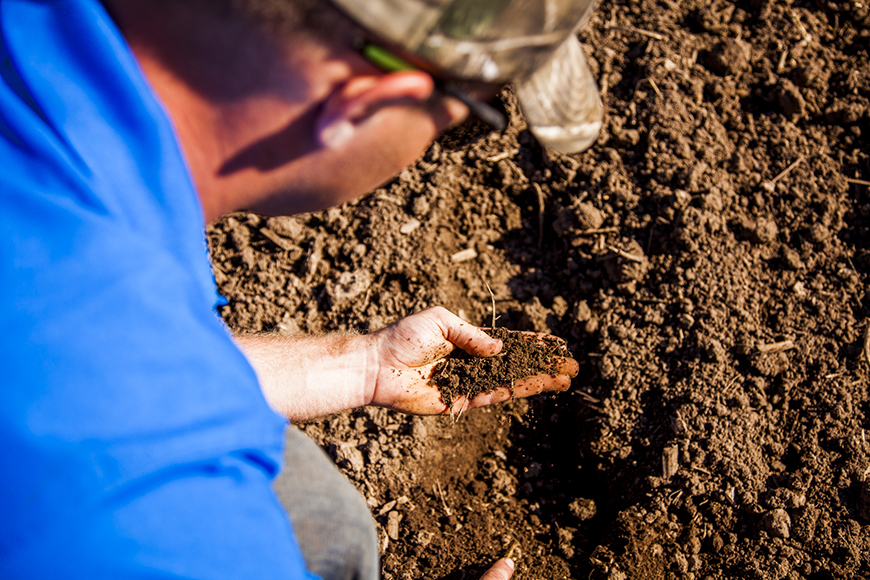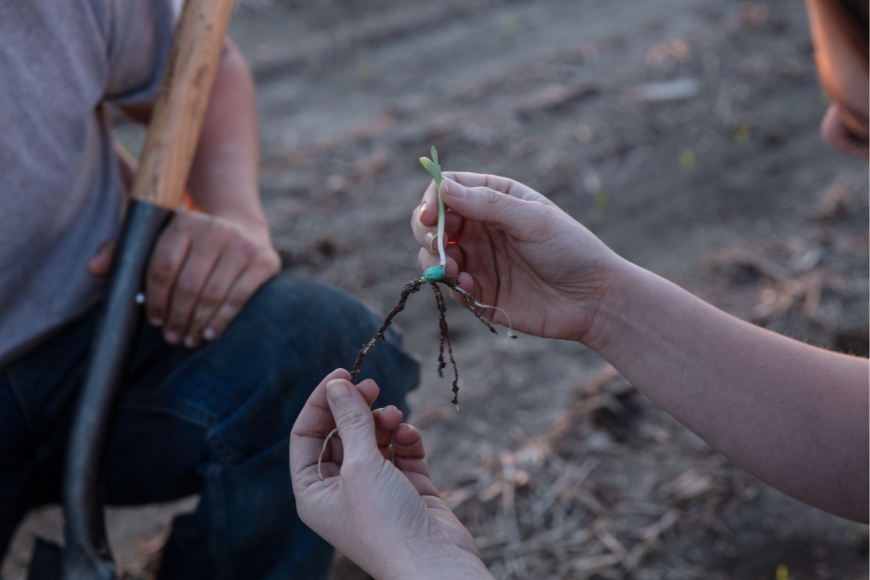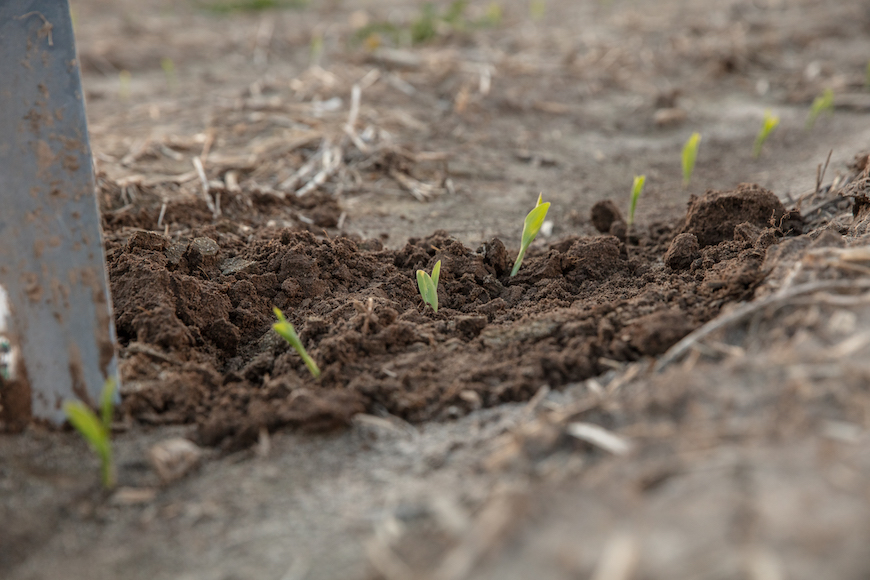Enhance Fall Fertility With Micronutrients

Fall nutrient applications are one of the first steps you’ll take to manage next year’s crop. You’re likely planning to apply phosphorus, potassium and maybe even sulfur, but what about the micronutrients critical to plant performance? There are many instances where fall-applied micronutrients can benefit not only the coming year’s crop but your operational efficiency as well.
You may think, “But won’t soil-applied micronutrients get tied up in the soil if I apply them ahead of time?” Since most micronutrients exist as positive cations and soil is negatively charged, that can be true for a portion of the application. However, there are still benefits to establishing a baseline in the fall. If your soil is substantially deficient in certain micronutrients, foliar applications in-season may not be enough to fix the problem.
By supplying micronutrients from the start, you’ll help protect your crop from deficiency stress before it becomes a detrimental issue. Having a baseline of micronutrients in the soil may allow your crop roots to take advantage of nutrient uptake through mass flow, diffusion and root interception. This baseline application can be partnered with an in-season tissue sample to help you quickly catch and fix an issue with minimal yield losses. In addition, by making these applications in the fall, you can streamline your passes by simply adding them to your planned macronutrient application. Often, it’s even found that fields with a history of deficiency no longer experience fundamental in-season micronutrient deficiency, thus reducing potential foliar application needs.
What I typically recommend when evaluating micronutrient needs in the fall is to look at your soil and tissue sample trends from the past few years. For example, let’s say you’re always seeing zinc deficiencies, and you use a foliar zinc application in-season, but it never seems to be enough. That’s likely a sign your fields could benefit from the head start of a fall application.
I also recommend comparing yields to removal rates. Evaluate soil and tissue test history and determine how much of your fields’ nutrients are being removed. If levels are low in the soil and you had some great yields, replacing those lost nutrients is especially important. Remember, foliar applications only mend a small fraction of the removal rate. Be sure to check nutrient removal rates based on yield level as well.
All photos are either the property of WinField United or used with permission.
© 2022 WinField United. Important: Before use always read and follow label instructions. Crop performance is dependent on several factors many of which are beyond the control of WinField United, including without limitation, soil type, pest pressures, agronomic practices and weather conditions. Growers are encouraged to consider data from multiple locations, over multiple years and to be mindful of how such agronomic conditions could impact results. WinField is a trademark of WinField United. All other trademarks are the property of their respective owners.
The Role of Fall-Applied Micronutrients
Micronutrients are often applied via foliar applications in-season, but they also have an important role to play in soil-applied fall nutrient mixes. Post-harvest applications help provide a baseline of key micronutrients for the upcoming spring crop.You may think, “But won’t soil-applied micronutrients get tied up in the soil if I apply them ahead of time?” Since most micronutrients exist as positive cations and soil is negatively charged, that can be true for a portion of the application. However, there are still benefits to establishing a baseline in the fall. If your soil is substantially deficient in certain micronutrients, foliar applications in-season may not be enough to fix the problem.
By supplying micronutrients from the start, you’ll help protect your crop from deficiency stress before it becomes a detrimental issue. Having a baseline of micronutrients in the soil may allow your crop roots to take advantage of nutrient uptake through mass flow, diffusion and root interception. This baseline application can be partnered with an in-season tissue sample to help you quickly catch and fix an issue with minimal yield losses. In addition, by making these applications in the fall, you can streamline your passes by simply adding them to your planned macronutrient application. Often, it’s even found that fields with a history of deficiency no longer experience fundamental in-season micronutrient deficiency, thus reducing potential foliar application needs.
How to Determine Micronutrient Needs
When evaluating micronutrient levels in-season, it’s always best to take a tissue sample and follow the report’s recommendations. However, the situation is different once the crop is gone. Sometimes, a post-harvest soil sample will tell part of the story, but it doesn’t provide all the information needed. It’s only a snapshot of what’s available at that particular time, and, at the time of a fall soil sample, the crop isn’t growing, so this sample technique works only as a benchmark for what the crop may need.What I typically recommend when evaluating micronutrient needs in the fall is to look at your soil and tissue sample trends from the past few years. For example, let’s say you’re always seeing zinc deficiencies, and you use a foliar zinc application in-season, but it never seems to be enough. That’s likely a sign your fields could benefit from the head start of a fall application.
I also recommend comparing yields to removal rates. Evaluate soil and tissue test history and determine how much of your fields’ nutrients are being removed. If levels are low in the soil and you had some great yields, replacing those lost nutrients is especially important. Remember, foliar applications only mend a small fraction of the removal rate. Be sure to check nutrient removal rates based on yield level as well.
Help Optimize Micronutrient Availability With Lignosulfonates
To help prevent micronutrient tie-up in situations like fall applications, we created a line of fertilizers containing lignosulfonate (LS) compounds derived from plant material that helps protect micronutrients from being tied up in the soil. For example, many growers have successfully mixed Zinc 10% LS into their dry phosphorus and potassium blends. Explore the full WinField® United LS line:- Copper 5% LS
- Corn Mix LS
- Crop Mix 1 LS
- Crop Mix 2 LS
- Iron 10% LS
- Manganese 8% LS
- Zinc 10% LS
- Organics Copper 5% LS
- Organics Crop Mix 1 LS
- Organics Iron 10% LS
- Organics Manganese 8% LS
- Organics Zinc 10% LS
All photos are either the property of WinField United or used with permission.
© 2022 WinField United. Important: Before use always read and follow label instructions. Crop performance is dependent on several factors many of which are beyond the control of WinField United, including without limitation, soil type, pest pressures, agronomic practices and weather conditions. Growers are encouraged to consider data from multiple locations, over multiple years and to be mindful of how such agronomic conditions could impact results. WinField is a trademark of WinField United. All other trademarks are the property of their respective owners.






